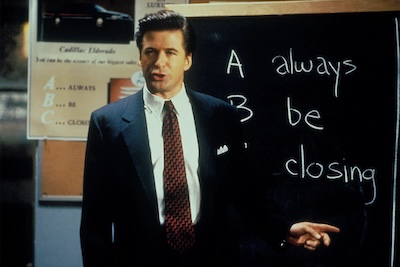In the history of popular music, no artist as gifted as Sly Stone has risen to such heights of fame and excellence and experienced such a short-lived peak, followed by a harrowing and precipitous fall. James Brown is more than the “Godfather of Soul”; he’s the inventor of funk. Sly Stone was the next step in the evolution of funk. One that only two artists since his mountaintop days can even compare to: George Clinton with P-Funk and Prince. That’s it. That’s the list.
Stone was the first bandleader to integrate his group with black and white players who were on the album covers and in the tour buses that took them to the stage. He blended pop, rock, psychedelia, and R&B into a funk-based stew that seemed to belong to its own genre. Over his peak, Sly and the Family Stone scored eleven top-40 hits (including two number ones), sold more than ten million albums, and filled stadiums worldwide. All in the six years before Stone’s wheels fell off due to excessive drug use and anxiety.

About those peak years: Sly and the Family Stone was one of the biggest bands in the world from 1967-1973, the epicenter of the Civil Rights movement. Sly’s use of an interracial band, his success on Top 40 radio, and his acceptance by hippies, members of the movement, and white folks who just loved to hear a good tune stands alone during that era. Sly and the Family Stone was the Revolution that preceded (and made possible) Prince and the Revolution.
Quesltove’s follow-up to his excellent, Oscar-winning documentary (and first film as a director) Summer of Soul does not reach the starry heights of his debut. Part of the challenge Questlove faces is the subject of Sly himself. Sly is most certainly a genius but also a reclusive and elusive one. Modern-day Sly can sometimes be heard in the film, but he is never seen once, save what appears to be a current photo at the very end of the film. Like Bob Dylan and Prince, capturing the persona of Sly Stone is a bit like grasping smoke inside your fist. He’s there, and then he’s not.
Still, there is much to recommend in Questlove’s colorful and creative documentary. Hell, just reminding people of who Sly and the Family Stone were and what they did qualifies as a public service. More than that, Questlove’s artful touches as a director show growth beyond his excellent curation and direction of Summer of Soul. To tell the story of Sly Stone, Questlove goes beyond collecting musical and personal footage; he sparingly (but dynamically) uses animation, and large portions of the film (particularly early on) are edited at the pace of Sly’s music to exhilarating effect. While the film does use the typical “talking head” device freely, the folks he collected to discuss Sly are choice. They include George Clinton, Andre 3000, Chaka Khan, D’Angelo, Q-Tip, Jimmy Jam, and Terry Lewis. It’s as if Questlove would accept no less than a genius to discuss a genius, and the decision pays off handsomely as each has the ability to speak to Sly’s sound and the pitfalls of life in the musical industry.

One of those pitfalls is the “Burden of Black Genius” (the film’s subtitle). Even in the modern era, being a great black musician is harder than being a white musician (see Beyonce moving from R&B to country as an example). All those interviewed about the challenges of being a “genius while black” attest to the extraordinary effort required to get a chance to record, be seen, and be widely heard. Sly cleared all those hurdles at one of the most difficult times for a black artist to get on the radio. It was an extraordinary accomplishment, but it did not come without a cost. As Andre 3000 says in the film, “The thing that makes you great is also the thing that kills you.” Sly is a painfully shy man whose natural vulnerability made public appearances (whether in interviews or on stage) extremely difficult for him. There’s a great anecdote about the band’s legendary performance at Woodstock in the film. Sly was so anxious about taking the stage that the only way he could manage to go on was through snorting heaping lines of cocaine. As the story usually goes with artists who become addicts, drugs can become a creative and performance benefit, but the rate of diminishing returns always applies.
The second half of Sly Lives! Largely covers the slide into Salingeresque obscurity. First, Sly runs off the band by recording the basic tracks himself. For the album “There’s a Riot Goin’ On” (which D’Angelo refers to as Sly’s rugged answer to Marvin Gaye’s “What’s Goin’ On), these exclusionary tactics often worked to great effect. Watching Sly get the beat from one of the first (and very antiquated) drum machines for the number one hit “Family Affair” is stunning. Eventually, though, for the other members of the band, what used to be a stem-to-stern process of creation had changed to a one-man show; the band felt superfluous and, one by one, walked away. Without his band (which had truly become a true family–even living in the same house together), Sly’s sound suffered a drop in quality, and commercial ruin followed. The bands Sly inspired (Like George Clinton and P-Funk) were passing him by, and sadly, so was life. In fact, Sly would go on to open for P-Funk, an idea that at one time would have seemed impossible.
The rise and fall of Stone is mostly well-documented, but there are two glaring omissions in the film that puzzled me. For several years, Stone lived out of a van for years due to burning through all of his money through drug abuse, loss of airplay, and missing shows. Sly Lives! Never references that period in Stone’s life. The film also omits the $5 million judgment Stone was awarded in 2015 by the courts against his former manager, Jerry Goldstein. While leaving these details out by no means ruins the film, it does rob it of some heft and clarity. We should know how Sly survived all those lean years after his stardom faded and he effectively disappeared. The case against Goldstein (who was also sued for skimming royalties from the ‘70s funk band WAR) is the biggest story regarding Stone in the last decade, but you won’t find the case covered in Sly Lives! at all.
I also would have loved to have seen and heard more about Stone’s return to recording and performing (however brief) with funk rocker Jesse Johnson (former lead guitarist of The Time) on their fiery duet “Crazay,” which was the first single from Johnson’s “Shockadelica” album. “Crazay” went all the way to number two on the R&B charts and nearly made the Top 40. Stone’s vocal and playing prowess was self-evident on the Johnson cut, and Sly even appeared in the video. Unfortunately, precious little time is given to Sly’s last charting single.
Still, there is much to enjoy in Sly Lives! To hear of how he was a prodigy hiding in plain sight during his youth, working with his church gospel band and choir, becoming the hippest DJ in San Francisco, producing records for others at the age of 19 (including an early version of “Somebody to Love” with Grace Slick), hearing Sly’s benevolent leadership of the Family Stone in recording sessions, and of course, viewing Sly and the Family Stone’s live performances, and reminding you of how influential an artist he was and remains is reason enough for the film to be seen.
Yet, for all the numerous aspects of Sly’s life the film gracefully illuminates, there’s this nagging sense that we still don’t know who Sly really is. Of course, that might have been a hurdle too high to clear for anyone. Sly Stone is an enigmatic genius, and understanding genius may be the tallest order of them all.
See Sly Lives!on Hulu now








![‘Pirates! The Penzance Musical’ Breakout Star Nicholas Barasch Discusses Performing On The Tonys With Seven Stitches On His Face [VIDEO]](https://thecontending.com/wp-content/uploads/2025/06/Pirates0011r-120x86.jpg)
